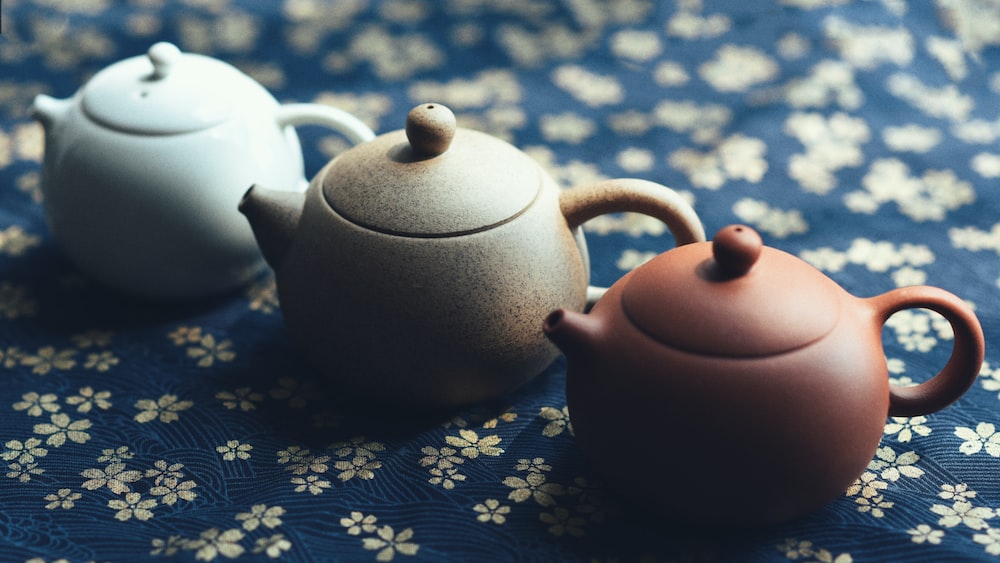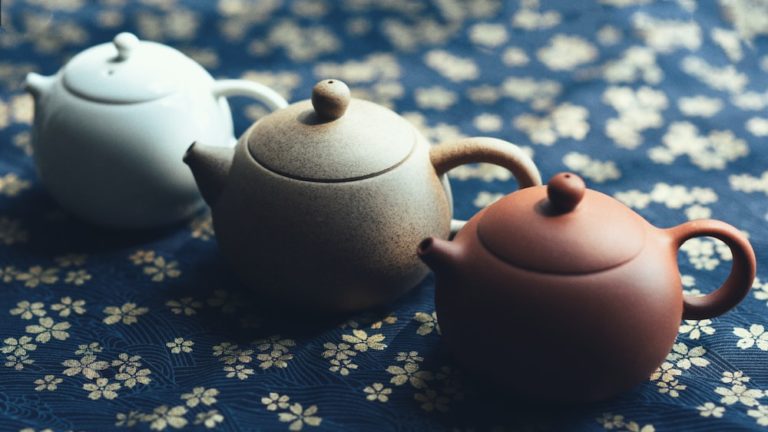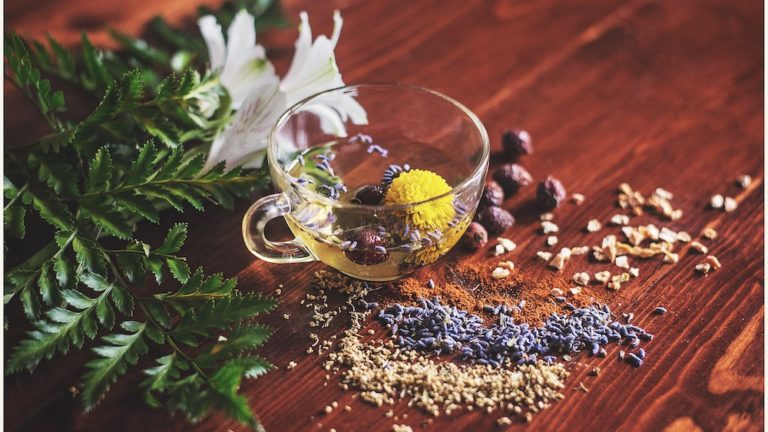What Does Matcha Tea Taste Like? The Ultimate Guide

What Does Matcha Tea Taste Like? The Ultimate Guide
Welcome tea lovers, health enthusiasts, and curious folks! Ever find yourself standing in the aisle of a hipster grocery store, staring at a little tin of powdered green stuff labeled “Matcha,” and wondering, “What the heck is that?” We’ve all been there, right? No? Just me, then?
Well, lean in and listen close, because today we’re demystifying the ins and outs, the whims and ways and the fuss – yes, the wonderful, spectacular fuss – over matcha tea. You’ll experience the joy and imagine the taste (oh, the taste!) as we frolic through the magical world of this richly green, finely ground, antioxidant-packed super tea. We’ll explore why matcha has staked its claim as the darling of the tea world and seized a fervent chunk of the wellness industry.
But this isn’t just a merrily skipping through green fields and nibbling on antioxidant-rich leaves kind of journey. Get ready, dear readers, for the whole nine yards of this verdant gem – from its historical roots (spoiler alert: samurais are involved!) to the various grades, taste, and the surprising ways of making it, with a pinch of humor thrown in for good measure. Brace yourselves for the ultimate guide to the world of matcha tea!
Understanding Matcha Tea
So, what is this magical powder we speak of so reverently? What is it that sets matcha tea apart from the crowd of teas teetering on your pantry shelves?
What is Matcha Tea?
Powdered green tea. That’s what matcha is, in a nutshell (of course, it’s a tea leaf, not a nutshell!). But let’s stretch that nutshell into a hammock and recline in the glorious detail. Matcha is, indeed, green tea, but it’s not just any green tea. Imagine if your everyday green tea decided to go on a wellness retreat, did a little soul-searching, and came back rejuvenated and all high on life. That’s matcha for you!

Matcha is derived from the Camellia sinensis plant, the same plant from which all traditional teas are procured. The process, however, that those leaves undergo to become matcha, is what makes all the difference. Instead of being infused and removed, these leaves are ground into a fine, vibrant green powder.
The greener, the better. That’s the mantra in the matcha world. The brilliant Hulk-ish hue is not only aesthetically charming but hints at its elevated nutritional status. The green idyllic powerhouses, chlorophyll and amino acids, are in abundant supply in matcha, attributing to its vivid green color and nutritionally denser profile.
Matcha is not just any green tea, it is a vibrant green powdered tea made from leaves that undergo a special process, resulting in a higher nutritional content.
Origin of Matcha Tea
Now, hold your teacups and let’s time-travel. The origin of matcha tea can be traced back to the Tang Dynasty in China. It started with tea leaves being steamed and formed into tea bricks for easy storage and trade.
Fast forward a few centuries to the Song Dynasty, and voila, we have the advent of the powdered form of tea, which made its way into Zen Buddhist rituals. But it was in the hands of the Japanese monks, who brought the tea from China, that these humble powdered leaves found stardom and morphed into the ceremonial-grade matcha that we know and love today.
Different Grades of Matcha Tea
Phew, welcome back to the present! Here we are, standing in the resplendent aura of matcha tea. But here’s the catch, not all matcha is created equal. Be it the taste, color, nutritional composition, or price, there’s a whole spectrum to consider!
Matcha tea diverges into two main grades: Ceremonial and culinary. Ceremonial grade matcha is the Scarlett Johansson of the matcha world – top-notch, high-quality, and meant to be savored as it is, traditionally with hot water. This matcha is ethereal, vibrant green that smells like a meadow after a rain shower.
On the other hand, we have the culinary grade matcha, aka versatile Vanessa. This grade is your go-to buddy for cooking and baking. It’s less pricey, making it great for smoothies, lattes, or those matcha pancakes you spotted on a trendy brunch menu.
And then there’s the gradient within these grades, going from ‘classic’ to ‘premium’ or ‘cafe’ to ‘ingredient’ to ‘kitchen’ grade in the culinary spectrum. And trust me, this grading is not just an adaptation of high-school label antics, there’s actually a fascinating reasoning behind it.
The Taste Profile of Matcha Tea
But, what does matcha taste like? Is it just like regular green tea, or is there more to this enigmatic concoction?
Describing the Taste of Matcha Tea
Drumroll, please! Allow me to introduce the star of the show, the taste of matcha tea. Picture this – a playful concoction of umami, sweetness, and a piquant aftertaste that lingers. Now, I wish it was as simple as saying matcha tastes like grass, but that’d be doing it injustice.
So let’s dive deeper. Ceremonial grade, the prima donna of Matcha, boasts a smooth and sophisticated profile, with the umami taste doing a cirque du soleil on your palate. Its rival, the culinary grade, leans more towards the bitter, robust end of the flavor spectrum.
Still having trouble imagining it? Imagine a soft grassy taste playing a graceful ballet with lightly toasted nuts, then just when you think the dance is over, it leaves behind a lingering sweetness. An interesting fact – this sweetness is often accredited to an amino acid known as L-theanine.

Factors Influencing the Taste of Matcha Tea
Even though every sip of matcha whispers tales of ancient ceremonies and meditating monks, a lot goes on behind the scenes in influencing its taste. Pro Tip: Keep an eye out for color when buying matcha. The brighter the green, the fresher and higher quality it is.
The taste pallete of matcha is governed by several factors such as the quality of leaves, their cultivation methods (shade-grown, mind you!), the region where they are grown, and even the time and temperature at which it’s brewed. Research indicates that shade growth increases the L-theanine and caffeine content, in turn enhancing the umami flavor of matcha tea.
Comparing Matcha Tea with Other Teas
We’ve established that matcha is amazing, sure. But how does it square up against its tea relatives, the common green tea, or the dark and mysterious black tea? Coming right up in the next chapter of our matcha saga.
Matcha Tea vs. Green Tea
If we were to compare Matcha tea with a typical Green tea blend, the comparison would be akin to watching a bumblebee enthusiastically collecting pollen versus watching paint dry on a sunny Sunday afternoon. Both activities are essentially static, but there’s a world of a difference between them.
Matcha and Green tea both come from the same plant, Camellia sinensis. However, the cultivation process results in differing flavors, appearances, and nutritional properties. Matcha, the emerald starlet, is cultivated under the shade, which amplifies its chlorophyll and amino acid levels. This is what gives Matcha its potent flavor and health benefits. On the other hand, Green tea, the sage bystander, is grown fully exposed to sunlight, resulting in a more astringent flavor and lighter color.
The cultivation process of Matcha tea under shade amplifies its chlorophyll and amino acid levels, giving it its potent flavor and health benefits, while Green tea, grown fully exposed to sunlight, has a more astringent flavor and lighter color.
Matcha Tea vs. Black Tea
If Matcha tea and Black tea were to enter a ring for a flavor showdown, it wouldn’t be a referee’s worst nightmare. It’s more like watching a bubbly salsa dancer performing alongside a solemn tai chi master. A game of flare against poise – quite interesting!
Matcha is vibrant, creamy, and holds a slight sweet undertone, reminiscing of vegetal flavors. Black tea, however, flaunts strong, malty notes, oftentimes described as bold, strong, or robust. Black tea undergoes full oxidization, which adds to its darker hue and robust flavor. As opposed to this, Matcha, with its special cultivation and lack of oxidization, presents an entirely different palette.
Health Benefits of Matcha Tea
Let’s put the telescope aside and wear our scientific goggles for a moment, folks. Matcha isn’t just a delicious, vibrant-colored drink. Its health benefits would make even Spinach run for its money (sorry, Popeye!). Loaded with antioxidants and numerous other healthy compounds, Matcha has earned its spot in the health hall of fame.
Nutritional Content of Matcha Tea
If you thought unicorns were magical, wait until you hear about Matcha! It’s as though Mother Nature herself decided to mix a healthy cocktail–a power-packed concoction of vitamins, minerals, and antioxidants. Specifically, Matcha redefines the term “nutritionally dense”.

Amongst various nutrients, some stars of the show are Vitamin C, Selenium, Chromium, Zinc, and Magnesium, all playing a central role to keep our bodily functions ticking smoothly. But don’t start applauding yet! Save some for the antioxidants, or more specifically, a type of catechin called EGCG (Epigallocatechin Gallate).
Health Advantages of Drinking Matcha Tea
Now that we’ve sneaked a peek into Matcha’s nutritional treasure chest let’s unveil the advantages of indulging in this drink. Long story short, Matcha isn’t just an Instagram-worthy beverage; it’s like a fully-equipped covert health trooper disguised as a cozy hot cup.
A sip of Matcha might as well be a sip of powerful antioxidants, and we’re not talking just any antioxidants – plenty of EGCG!, known to be a potent crusader against heart disease and cancer. Additionally, L-theanine in Matcha improves brain function and reduces stress. Less stress – more happiness, right?
How to Prepare Matcha Tea for Best Taste
Do you love theatre? Well, making Matcha is a beautiful ambient play in itself – there’s ritual and drama, precision and artistry – make sure to grab a front-row seat!
Tools Needed for Preparing Matcha Tea
Curtain up folks, and let’s meet the star cast for the performance.
- Matcha Powder: The protagonist of our story. Ensure it’s high-quality, ceremonial-grade Matcha for the full experience.
- Chasen (Bamboo Whisk): The unsung hero – it whips up the Matcha, creating that delightful frothy layer.
- Chawan (Matcha Bowl): The vessel that graciously holds the magic. Traditional bowls add authenticity to the experience.
- Chashaku (Bamboo Scoop): The precise scribe, ensuring you get just the right amount of Matcha.
Step-by-Step Guide to Making Matcha Tea
As carefully as a conductor leading an orchestra, here’s how you can prepare a enchanting cup of Matcha:
- Sift 1-2 scoops of Matcha powder into your Matcha bowl using a fine mesh sieve. This refines the magic dust and breaks down lumps.
- Heat filtered or spring water to just below boiling and add about 2 ounces to the bowl.
- Take your Chasen, and whisk. Whisk, not stir. Think of repetitive back-and-forth motion, not circular. Do this vigorously until a frothy layer appears on top.
- Let it rest for a minute, take a moment to appreciate the vibrant hue and the serene aura, and sip!
Enhancing the Taste of Matcha Tea
Don’t stop at just the classical rendition of Matcha – create your symphony by enhancing its taste! Experiment, innovate, and infuse your personal touch because, as the saying goes, variety is indeed the spice of life!
Tips to Make Matcha Tea Taste Better
Now, don’t get me wrong – matcha is fabulous. But sometimes, like the rest of us, it needs a little bit of help to shine. First things first, try using a high-quality, ceremonial grade matcha. Quality matters, folks! Using a poor-grade matcha can result in a bitter and unpleasant taste, casting a dark cloud on your tea-drinking experience.
Additionally, watch your water temperature. Matcha doesn’t take kindly to boiling water – it’s more of a lukewarm bath kind of tea. A temperature between 160-175°F (70-80°C) is perfect. Finally, use the traditional bamboo whisk, or “chasen”, to stir your matcha. Why? Because traditional tools just make things taste better. Trust me on this one.
Using a high-quality, ceremonial grade matcha and watching the water temperature are essential for a delicious matcha experience.
Popular Matcha Tea Recipes
I’m sure we all agree, matcha doesn’t just belong in a tea bowl – it makes for an excellent guest star in some delightful recipes. First up, Matcha Latte. I mean, who doesn’t love a good latte, right? To make it, all you need is some green tea powder, milk (or dairy-free substitute), and a sweetener of your choice. Make sure it’s well whisked and you’re good to go!
Another great twist to the regular matcha tea is Matcha Lemonade (trust me, it’s a real thing). Just add lemon juice, cold water, and some sweetener to your matcha, and voila! you’ve got an invigorating drink for hot summer days. And then there’s Matcha Smoothie – talk about a healthy powerhouse. Throw in some banana, spinach, matcha powder, and a dash of honey into your blender, and boom! A nutrition bomb in a glass.
FAQs
1. Does Matcha Tea Taste Like Regular Green Tea?
Tasting matcha tea, you might find it has some similarities with regular green tea. Both share certain vegetal notes, but matcha amplifies the flavors, offering a robust and vibrant taste that can be sweet, creamy and slightly bitter.
2. Why Does My Matcha Tea Taste Bitter?
The bitterness in your matcha tea could be a result of two main factors. First, the quality. Lower grade matcha tends to be more bitter. Second, the water temperature. If the water is too hot, it will also make your tea taste bitter. So next time, keep the water temperature below boiling and consider investing in a high-quality green tea powder.

3. Can I Add Sweeteners to My Matcha Tea?
Absolutely, you can add sweeteners to your matcha tea. If you find the taste a little too earthy or bitter, a sweetener might just be the perfect sidekick. Honey, sugar, or agave syrup are popular choices but feel free to experiment.
4. How Much Matcha Tea Should I Drink Daily?
How much matcha you should drink daily largely depends on your personal preference and health goals. However, one to two cups are typically recommended for a healthy boost without causing any jittery effects.
Conclusion
Our matcha journey might come to an end but remember, your exploration of this green wonder should not. With its rich history, multi-layered taste profile, and bountiful health benefits, matcha is a realm worth exploring. So, take your time, experiment a bit – find your perfect matcha match and truly savor the Zen in every sip.
So, whether you’re a curious green tea novice or a matcha connoisseur, just remember, the path to wellness can often be a fabulous emerald-green journey. On those days when life seems as complicated as a morning sudoku, let matcha be your secret superpower. Cheers to your health and taste buds, dear tea enthusiasts!
Signing off, Zoe






